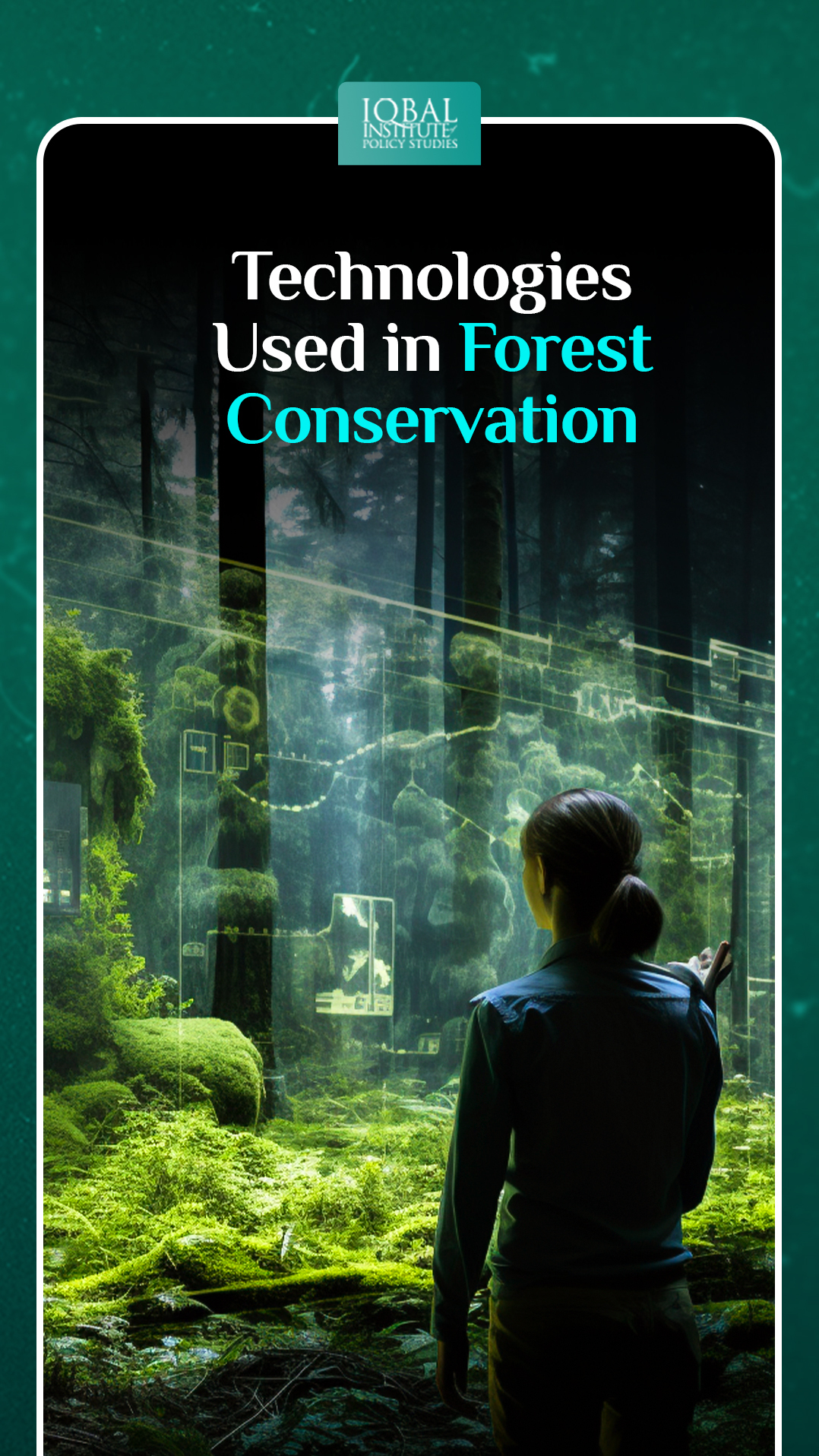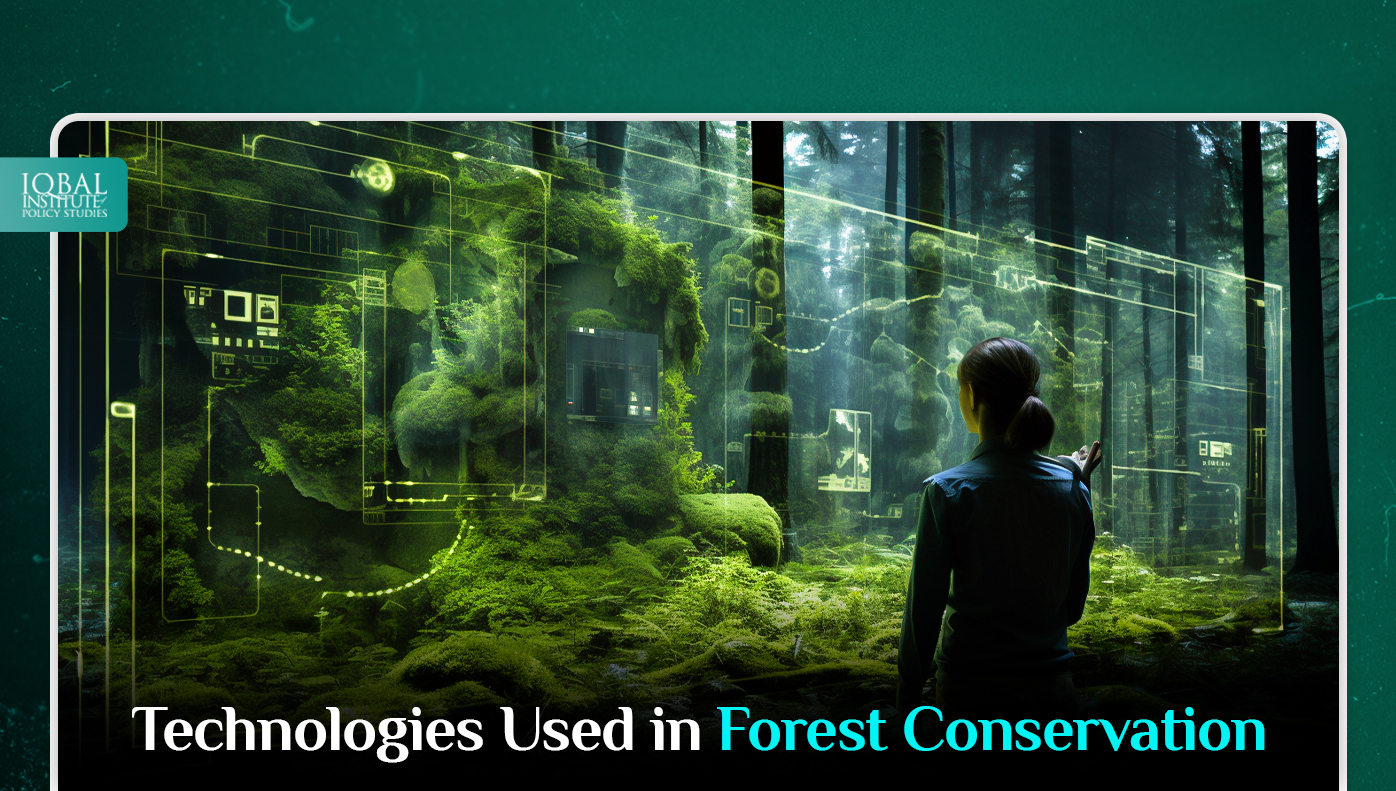Forests play a vital role in the survival of all living creatures, underscoring their profound significance. They are vital for biodiversity, climate regulation, and the sustenance of countless species, including humans. However, these vital ecosystems face ever-increasing threats from deforestation, habitat destruction, and climate change. To counter these challenges, conservationists and scientists are turning to technology for innovative solutions. Technology has revolutionized the pivotal task of sustainable forest management, ushering in a new era of effectiveness. By harnessing the power of technology, researchers and conservationists can delve deeper into comprehending forest dynamics, enabling more efficient measures for their protection. Nonetheless, the adoption of such innovations remains constrained within developed nations. The lack of technology in developing nations contributes to forest depletion, hinders timely responses to forest fires and other environmental threats. Thus, to address this issue, governments should prioritize technology transfer and capacity building programs, providing access to state-of-the-art tools and knowledge for forest management. Also, international collaborations and partnerships can facilitate the transfer of technology and expertise to aid in the preservation of forests in developing nations. By harnessing innovation, nations can be the stewards of forests, safeguarding them for the benefit of all life on Earth.
Why is their a Need for Conservation?
Forests are not merely collections of trees; they are intricate ecosystems that provide a multitude of benefits to both nature and humanity.
Forests as Carbon Sinks
Forests are among the most effective carbon sinks on Earth. Through the process of photosynthesis, trees absorb carbon dioxide (CO2) from the atmosphere and store it as carbon in their trunks, branches, and roots. This carbon storage plays a critical role in mitigating climate change by reducing the concentration of greenhouse gases in the atmosphere.
Biodiversity Hotspots
Forests are biodiversity hotspots, teeming with a staggering array of plant and animal species. They provide habitat and sustenance for countless creatures, many of which are unique and irreplaceable. The loss of forests directly threatens the survival of these species.
Human Dependence on Forests
Humans rely on forests for a wide range of resources, including timber, non-timber forest products, and medicinal plants. Forests also help purify air and water, regulate local and global climates, and support various industries that drive economies around the world.
Which Technologies are used in Forest Conservation?
Modern technology has equipped people with powerful tools to monitor and protect forests more effectively than ever before. These tools enable scientists and conservationists to gather data, track changes, and make informed decisions.
Satellite Technology
Satellites equipped with advanced imaging technology are instrumental in monitoring changes in forest cover. Systems like Landsat and MODIS provide valuable data by capturing high-resolution images of Earth’s surface at regular intervals. These images are analyzed to track deforestation, forest fragmentation, and changes in land use.
Remote Sensing
Remote sensing technology extends beyond satellites. LiDAR (Light Detection and Ranging) and RADAR (Radio Detection and Ranging) are used to collect detailed data about forest structure, topography, and health. LiDAR, in particular, has proven invaluable for creating three-dimensional models of forests, allowing scientists to study canopy structure and estimate biomass accurately.
Drones and UAVs
Unmanned Aerial Vehicles (UAVs), commonly known as drones, have revolutionized forest monitoring. Drones can access remote and challenging terrain, capturing high-resolution imagery and data. They are especially useful for monitoring forest health, mapping invasive species, and assessing damage after natural disasters like wildfires.
Artificial Intelligence
Artificial intelligence (AI) and machine learning (ML) are playing a growing role in forest conservation efforts. These technologies enable the automated analysis of vast amounts of data, helping to uncover patterns and trends that might otherwise go unnoticed. For instance,
AI-powered camera traps and audio recorders are used to monitor wildlife in forests. These devices can automatically identify and track animals based on their visual or acoustic signatures. Thus, this technology allows researchers to gather extensive data on wildlife behavior, helping to inform conservation strategies.
Machine Learning
Machine learning algorithms are used to develop predictive models for forest health and threats. For example, algorithms can analyze historical data on forest fires, weather patterns, and vegetation to predict the likelihood of future wildfires. This information is invaluable for allocating resources and implementing preventative measures.
Blockchain and Forest Transparency
Transparency and accountability are critical components of effective forest conservation. Blockchain technology is increasingly being used to create transparent supply chains for timber and other forest products. It is a decentralized ledger technology that provides an immutable record of transactions. When applied to the forestry sector, it can track the origin and movement of wood products from the forest to the consumer. Also, this transparency helps ensure that timber is sourced legally and sustainably, reducing the market for illegally harvested wood. Furthermore, illegal logging is a major threat to forests worldwide. By using blockchain to create a transparent supply chain, it becomes much more difficult for illegal timber to enter the market. This technology acts as a deterrent, reducing the economic incentives for illegal logging operations.
Citizen Science and Mobile Apps
Engaging the public in conservation efforts is crucial for collecting valuable data and raising awareness about the importance of forests. As a result, citizen science apps have emerged as a powerful tool for involving people in forest monitoring and data collection. These apps empower individuals to contribute to scientific research by reporting observations of wildlife, plants, and environmental changes. Moreover, these apps often include features for recording and sharing photos, audio recordings, and location data, all of which are valuable for scientific analysis.
Genetic Engineering
Biotechnology is being used to develop tree varieties that are resistant to pests and diseases. By enhancing the natural defenses of trees, scientists can reduce the need for chemical pesticides and promote healthier, more resilient forests.
Forest-Planting Robots
Efficient reforestation is essential for restoring areas impacted by deforestation or wildfires. Forest-planting robots are designed to plant trees at a large scale, significantly increasing the efficiency of reforestation efforts. These robots can plant thousands of saplings per day, helping to rapidly rehabilitate damaged ecosystems.
Big Data Analytics
Big data analytics play a crucial role in modern forest management. It is used to develop predictive models that consider factors like weather conditions, vegetation types, and historical fire data. This information helps authorities allocate firefighting resources effectively and implement preventative measures. Additionally, big data analytics are used to create models that simulate these ecosystems, helping scientists understand how different factors influence forest health, biodiversity, and resilience..
Quantum Computing and Advanced Sensors
Quantum computing, advanced sensors, and new materials are among the emerging technologies with the potential to revolutionize forest conservation. Quantum computing can process vast amounts of data at unprecedented speeds, enabling more complex simulations and analysis. Whereas, advanced sensors can provide real-time monitoring of forest conditions, helping authorities respond quickly to threats.
Conclusion
In a world facing unprecedented environmental challenges, technology has emerged as a powerful ally in the fight to conserve our forests. From satellite monitoring and AI-driven wildlife tracking to blockchain transparency and biotechnology-enhanced reforestation, innovative tools and methods are helping us protect these invaluable ecosystems. As we look to the future, the continued development and responsible use of technology hold the promise of a brighter, greener world where forests thrive, and their vital contributions are preserved for generations to come.
This article is written by Haneen Gul. Haneen is a research analyst at the Iqbal Institute of Policy Studies (IIPS).



Leave a Reply